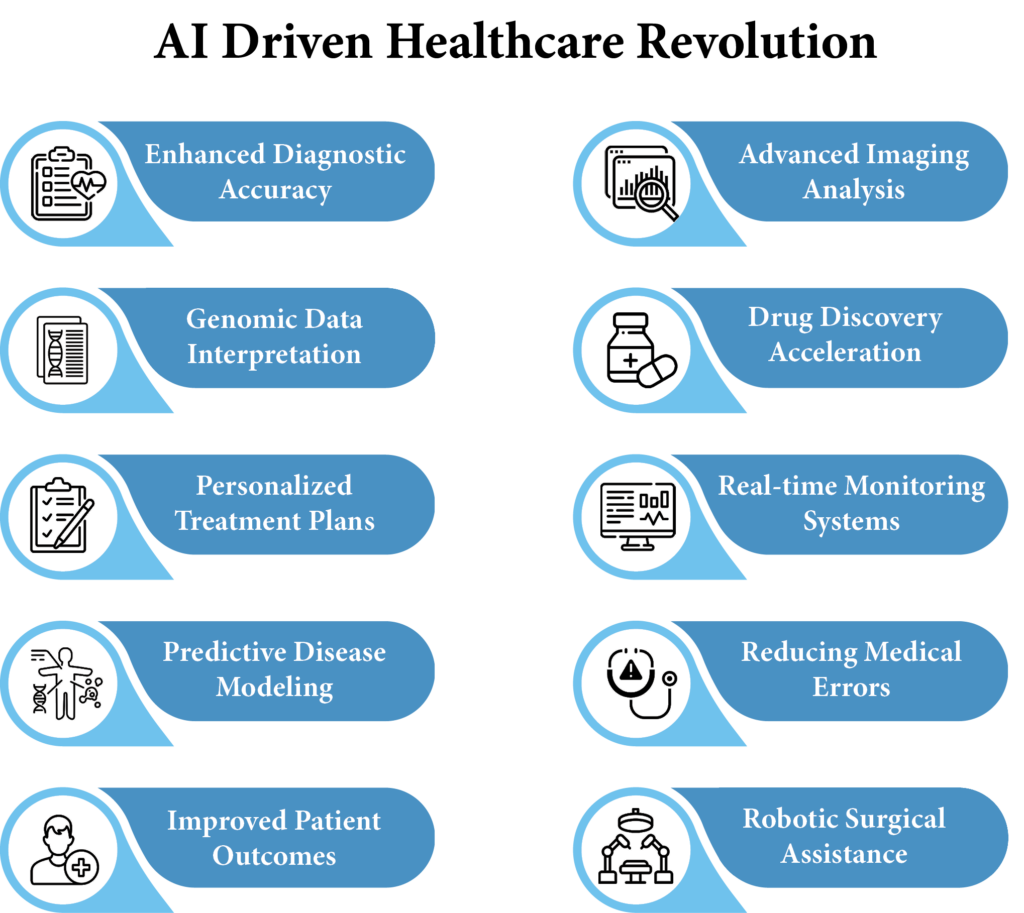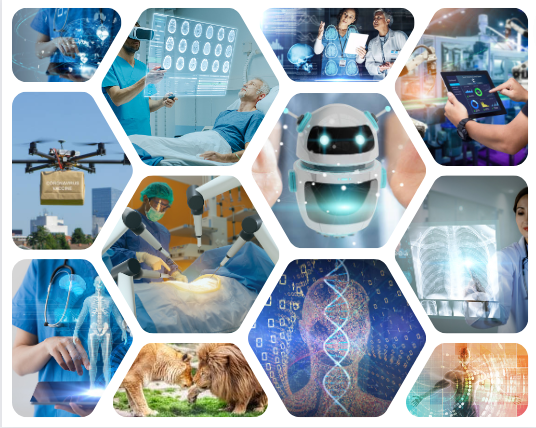The year 2023 marks a new era of unprecedented growth and innovation in the healthcare sector. As we stand at the dawn of a new era in healthcare, it is essential to recognize the transformative power that technology holds in shaping the future of medicine. The relentless pace of innovation and the convergence of various technological advancements have revolutionized the way healthcare is delivered, experienced, and perceived. With rapid advancements in technology and the lessons learned from the recent global health crisis, the future of medicine is being redefined at an astounding pace.
The integration of cutting-edge technologies in healthcare has the potential to revolutionize the industry, improve patient outcomes, and reduce the burden on healthcare systems across the globe. As we witness this rapid evolution, it becomes increasingly important to stay informed about the latest advancements and their potential impact on medical practice. By embracing these novel technologies and adapting to the changing landscape, healthcare professionals can stay ahead of the curve and deliver the best possible care to their patients. These advancements in healthcare sector have significantly improved the efficiency, accessibility, and quality of healthcare services, resulting in better patient outcomes and a more streamlined approach to care delivery. As we move forward, it is crucial to understand the driving forces behind these trends and how they will continue to redefine the healthcare sector in 2023 and beyond.
In this article, we will explore the top technology trends that are shaping the future of medicine and transforming the way healthcare professionals diagnose, treat, and manage various health conditions.
Telemedicine and Remote Healthcare Delivery: Bridging the Distance
Telemedicine and remote healthcare delivery have emerged as powerful tools in providing accessible and cost-effective healthcare solutions. The COVID-19 pandemic highlighted the importance of these technologies, with healthcare providers rapidly adapting to virtual consultations and remote monitoring of patients. In India, telemedicine platforms such as Practo, 1mg, and mfine experienced exponential growth during the pandemic, underscoring the potential of these services to reach a broader patient base. Even post pandemic there are certain advancements that are revolutionizing healthcare sector. Internationally, companies like Teladoc and Amwell have also witnessed significant expansion, with telemedicine becoming an integral part of healthcare delivery systems.
Artificial Intelligence (AI) and Machine Learning (ML) in Diagnostics and Treatment Planning
AI and ML have made significant strides in the field of diagnostics and treatment planning. These technologies have the potential to analyze vast amounts of data, identify patterns, and provide valuable insights for healthcare professionals. For instance, Google’s DeepMind has developed an AI algorithm capable of diagnosing diabetic retinopathy and macular degeneration with remarkable accuracy. Similarly, IBM Watson Health’s AI-driven tools have been used to analyze medical images, genomic data, and electronic health records to identify patterns and provide personalized treatment recommendations. These advancements are expected to streamline diagnostics, improve treatment outcomes, and reduce healthcare costs.

Personalized Medicine: Tailoring Treatments to Individual Needs
The advent of personalized medicine has enabled healthcare providers to tailor treatments to an individual’s unique genetic makeup, lifestyle, and environmental factors. By understanding the specific characteristics of a patient, medical professionals can develop more targeted and effective therapies. For example, the use of genomic data in oncology has led to the development of personalized cancer treatments, such as targeted therapies and immunotherapies. Companies like 23andMe and AncestryDNA have made genetic testing more accessible, allowing individuals to gain insights into their genetic predispositions and make informed decisions about their health.
Robotics and Automation: Revolutionizing Surgery and Rehabilitation
The integration of robotics and automation into healthcare has revolutionized surgery and rehabilitation. Robotic surgical systems, such as the da Vinci Surgical System by Intuitive Surgical, have allowed surgeons to perform complex procedures with greater precision, reduced blood loss, and faster recovery times. In the field of rehabilitation, robotic exoskeletons, such as those developed by ReWalk Robotics and Ekso Bionics, have enabled patients with mobility impairments to regain their independence and improve their quality of life. As these technologies continue to evolve, we can expect to see even more sophisticated and versatile robotic solutions in healthcare.
Advanced Medical Imaging Technologies: Enhancing Visualization and Diagnosis
Medical imaging has undergone significant advancements in recent years, with cutting-edge technologies like 3D and 4D ultrasound, digital X-ray, and magnetic resonance imaging (MRI) enhancing visualization and diagnostic capabilities. For instance, the development of functional MRI (fMRI) has allowed for real-time monitoring of brain activity, aiding in the early detection of neurological disorders such as Alzheimer’s disease and epilepsy. Companies like GE Healthcare and Philips have been at the forefront of developing advanced imaging technologies, contributing to more accurate diagnoses and improved patient outcomes. As medical imaging technology continues to advance, we can anticipate even greater innovations in diagnostic capabilities and visualization techniques.
Chatbots in Healthcare: Revolutionizing Patient Engagement and Support
In recent years, chatbots have emerged as a powerful tool in the healthcare industry, revolutionizing patient engagement and support through their ability to provide instant, personalized, and accurate information. These AI-driven conversational agents can interact with patients in a natural, human-like manner, assisting them with various tasks such as appointment scheduling, medication reminders, symptom triage, and answering general health inquiries.
One notable example of a chatbot in healthcare is Ada, an AI-powered app that helps users understand their symptoms and guides them to appropriate care. By asking users a series of questions, Ada collects relevant information and provides a personalized assessment of potential health conditions, empowering patients to make informed decisions about their healthcare. Another example is Woebot, a mental health chatbot that uses cognitive-behavioural therapy (CBT) principles to support users experiencing stress, anxiety, and depression. By providing real-time, tailored interventions, Woebot has demonstrated the potential for chatbots to improve mental health outcomes.
These innovative applications of chatbots in healthcare showcase the potential for AI-driven technologies to enhance patient engagement, streamline care processes, and provide timely and personalized support. As chatbot technology continues to advance, we can expect even more sophisticated and responsive solutions that will further transform the healthcare landscape.
Virtual and Augmented Reality: Transforming Medical Training and Patient Education
Virtual reality (VR) and augmented reality (AR) technologies are revolutionizing medical training and patient education by providing immersive, interactive, and engaging experiences. These technologies enable medical professionals to simulate complex medical procedures and scenarios, enhancing their skills and reducing the learning curve associated with traditional training methods.
One example of VR in medical training is Osso VR, a surgical training platform that allows surgeons to practice and hone their skills in a risk-free virtual environment. Similarly, the Augmented Reality Integrated Simulation Education (ARISE) project, developed by the University of Twente, uses AR technology to superimpose virtual information onto a physical simulation, providing real-time feedback and guidance for medical students during surgical training.
In patient education, VR and AR technologies can help individuals better understand their medical conditions and treatment options. For example, the company Medical Realities has developed a VR platform that allows patients to explore their anatomy in 3D, enabling them to visualize and comprehend complex medical information. This immersive approach to patient education can lead to increased engagement, improved understanding, and better adherence to treatment plans.
Wearable and Implantable Medical Devices: Empowering Continuous Health Monitoring
Wearable and implantable medical devices are empowering patients to take control of their health by providing continuous monitoring of vital signs and other health indicators. These devices can track various parameters, such as heart rate, blood pressure, glucose levels, and sleep patterns, facilitating early detection and timely intervention for potential health issues.
One notable example is the Apple Watch Series 7, which features an FDA-cleared electrocardiogram (ECG) app that can detect irregular heart rhythms, potentially alerting users to conditions like atrial fibrillation. Another example is the Dexcom G6, a continuous glucose monitoring (CGM) system that allows people with diabetes to track their glucose levels in real-time, enabling better glycemic control and improving their quality of life.
3D Printing and Bioprinting: Innovations in Medical Device Manufacturing and Tissue Engineering
3D printing and bioprinting technologies are ushering in a new era of medical device manufacturing and tissue engineering. 3D printing allows for the rapid and cost-effective production of customized medical devices, prosthetics, and implants, while bioprinting enables the creation of living tissues and organs for transplantation and research purposes.
A recent example of 3D printing in medical device manufacturing is the FDA-approved 3D-printed titanium spinal implant developed by EIT Emerging Implant Technologies. This implant leverages 3D printing technology to create a customized, porous structure that promotes bone growth and fusion. In the field of bioprinting, companies like Organovo are working on developing functional human tissues, such as liver and kidney tissues, which can be used for drug testing and, eventually, transplantation.
Precision Public Health: Leveraging Big Data and Genomics for Population Health Management

Precision public health is an emerging field that leverages big data, genomics, and other advanced technologies to develop targeted interventions for population health management. By analyzing vast amounts of data from various sources, such as electronic health records, genomics databases, and social determinants of health, precision public health aims to identify trends, risk factors, and health disparities at the population level.
One example of precision public health in action is the Global Burden of Disease (GBD) study, which uses big data analytics to measure the health status of populations worldwide. This information can guide public health policy, resource allocation, and targeted interventions to address specific health issues and disparities. Similarly, the All of Us Research Program, launched by the National Institutes of Health, aims to gather genomic and health data from one million individuals to develop personalized prevention and treatment strategies for various diseases, ultimately benefiting.
Ethical Considerations and Regulatory Challenges in the Age of Medical Technology Advancements
Data Privacy and Security: With the increasing use of electronic health records, wearable devices, and telemedicine, protecting patient data from unauthorized access and potential misuse is a significant ethical and regulatory concern. Healthcare organizations must implement robust data security measures and adhere to privacy regulations like the Health Insurance Portability and Accountability Act (HIPAA) and the General Data Protection Regulation (GDPR).
Informed Consent and Transparency: Ensuring that patients understand the risks and benefits associated with medical technologies, such as AI-based diagnostics, genetic testing, and telemedicine, is crucial. Healthcare providers must obtain informed consent and maintain transparency about the use of these technologies in patient care.
Algorithmic Bias and Fairness: AI and ML applications in healthcare can inadvertently perpetuate existing biases if the training data is not representative of diverse populations. Developers and healthcare organizations must prioritize fairness and inclusivity in algorithm design to avoid exacerbating health disparities.
Access to Innovative Technologies: The high cost of cutting-edge medical technologies can potentially limit their availability to economically disadvantaged populations, exacerbating existing health disparities. Policymakers and healthcare organizations must work to ensure equitable access to advanced medical technologies for all patients, regardless of their socioeconomic status.
Regulation and Oversight: Rapid advancements in medical technology can outpace existing regulations and oversight mechanisms. Regulatory agencies, such as the FDA and EMA, must continuously adapt and update their frameworks to ensure that innovative healthcare technologies are safe, effective, and compliant with ethical standards.
Intellectual Property and Licensing: The commercialization of medical technology advancements raises concerns around intellectual property, patent protection, and licensing agreements. Balancing the rights of innovators and the need for public access to advanced medical technologies is an ongoing ethical and regulatory challenge.
Patient Autonomy and Control: As medical technology advancements empower patients with more information and control over their health, striking a balance between patient autonomy and professional expertise becomes crucial. Healthcare providers must respect patient autonomy while ensuring that patients make well-informed decisions based on accurate information and expert guidance.
Clinical Trials and Human Subject Research: The development and testing of innovative medical technologies often involve human subjects, raising ethical concerns around informed consent, risk-benefit assessment, and the protection of vulnerable populations. Researchers and regulatory agencies must ensure that clinical trials and human subject research adhere to strict ethical guidelines and regulations.
Workforce Implications: As automation and AI technologies increasingly play a role in healthcare, there are concerns about potential job displacement and the need for re-skilling the workforce. Healthcare organizations, policymakers, and educational institutions must collaborate to prepare the workforce for the changing landscape of healthcare delivery.
In conclusion, the future of medicine is being transformed by a myriad of technological innovations that promise to reshape the way healthcare is delivered, experienced, and perceived. From virtual and augmented reality in medical training and patient education to wearable and implantable devices for continuous health monitoring, these advancements hold the potential to revolutionize patient care, improve health outcomes, and reduce healthcare costs.
As we envision the future of medicine, it is essential to recognize the ethical considerations and regulatory challenges associated with these technological advancements. Healthcare professionals, policymakers, and technology developers must work together to address these concerns and ensure the responsible and equitable integration of these innovations into clinical practice.
By embracing the transformative power of technology and fostering a culture of collaboration and innovation, we can unlock new possibilities in healthcare and build a future where high-quality, accessible, and personalized care is a reality for all. As we continue to push the boundaries of medical science and technology, we stand on the precipice of a new era in healthcare, marked by unprecedented advancements that will redefine the landscape of medicine for generations to come.
Composed by: “Varsha, proficient as a Business Analyst, has an educational foundation in healthcare IT, acquired through a PGDHM from IIHMR Delhi. Her primary interest rests at the intersection of healthcare and technology, with a specific focus on harnessing cutting-edge tech solutions to revolutionize patient care and enhance healthcare systems. Her work areas comprise optimizing healthcare data flow and improving operational efficiency, driving enhanced patient care and system robustness.”

